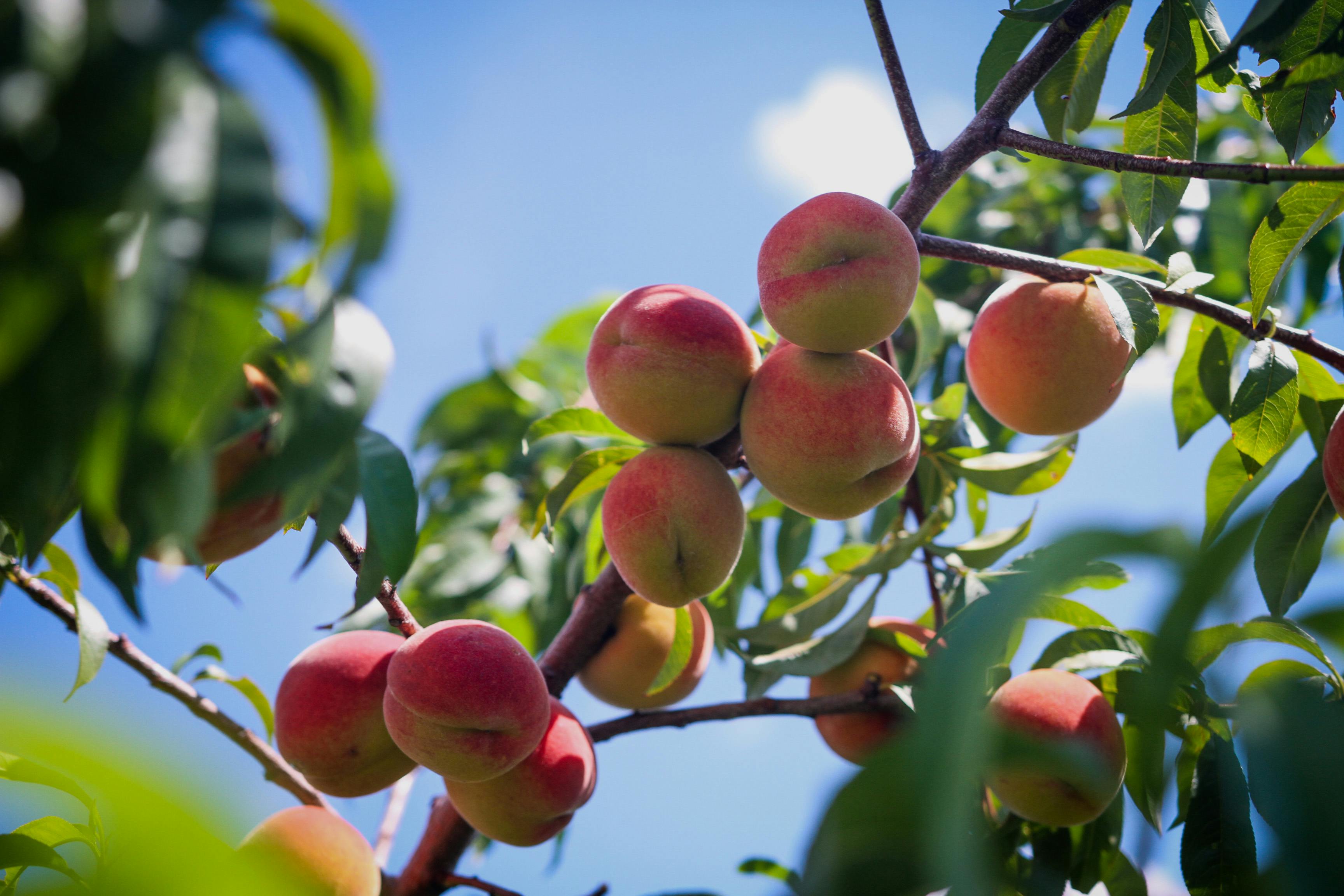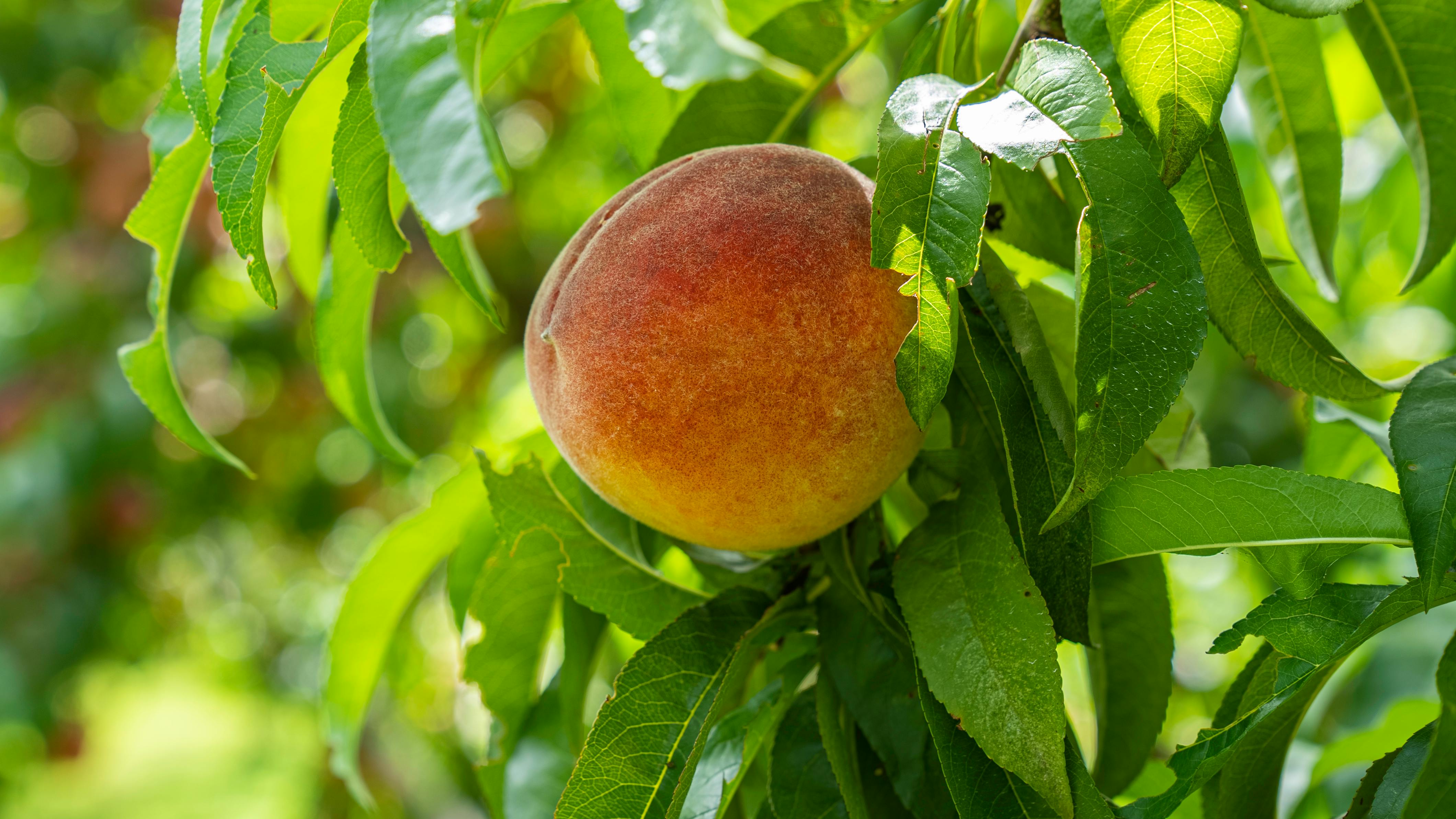A peach tree is a popular and attractive addition to most garden landscapes. As a deciduous tree, it can provide shade and beauty during the summer months, while also providing a delicious crop of juicy, sweet fruit when the time is right. But how long does it take for a peach tree to bear fruit? This article will provide an overview of what you can expect from your peach tree in terms of fruiting timelines.It typically takes a peach tree between 2 and 4 years after planting for it to begin bearing fruit.
Climate
Climate is one of the most important factors that affect peach tree production. In order to grow successfully, peaches need warm temperatures during the day and cooler temperatures at night. Too much cold can damage the trees and reduce the number of flowers or fruit they produce. They also need enough rainfall for proper growth, but too much water can be detrimental and cause fungal diseases. As such, it’s important to choose a location with a temperate climate for peach trees in order to ensure successful production.
Soil
The type of soil used for planting peach trees is also important for successful production. Peaches prefer well-drained soils that are high in organic material and have a neutral or slightly acidic pH level (between 6.0 and 6.5). Soils that are too sandy or clayey can lead to poor drainage and reduced yields. Additionally, making sure there is adequate fertility is essential for successful production, as inadequate nutrients can result in stunted growth and decreased yields.
Grafting
Grafting is another common practice used to increase peach tree production. This involves joining a scion (a shoot from an existing plant) onto a rootstock (the root-bearing portion of a graft) in order to create new varieties of peach trees with desired traits such as disease resistance or improved fruit quality. Grafting is an effective way to increase yields by creating more vigorous plants that are better able to survive in harsh conditions.
Pruning
Pruning is an essential practice for maintaining healthy peach trees and increasing yields. Pruning helps remove diseased, dead, or overcrowded branches which can reduce fruit production if left unchecked. Pruning also promotes air circulation which helps reduce the risk of fungal diseases such as powdery mildew or brown rot which can cause significant damage to crops if not controlled properly.
Irrigation
Irrigation is also important for maintaining optimal peach tree production since these trees require consistent moisture levels throughout their growing season in order to thrive. Drip irrigation systems are often used since they provide precise water delivery directly to the roots while minimizing water loss due to evaporation or runoff. Additionally, using mulch around the base of the tree helps retain moisture in the soil and protect against drought-like conditions.
By taking into account these factors when planting and caring for peach trees, growers can help ensure successful production throughout the growing season.
Choosing the Right Variety of Peach Tree
Choosing the right variety of peach tree for your garden is essential for producing tasty, juicy peaches. Peach trees come in many different varieties, each with their own characteristics and growing conditions. It is important to consider the climate in your area, as well as the soil type and drainage when selecting a variety. Consider the tree’s growth habit, hardiness zone, and ripening season when deciding which variety to plant.
The growth habits of peach trees come in two main types: freestone and clingstone. Freestone varieties are those that have fruit that easily separate from the stone or pit when ripe. Clingstone varieties are those where the fruit clings to the pit and require more effort to remove it. Freestone varieties are generally preferred for eating fresh while clingstones are better suited for baking or canning.
When selecting a variety of peach tree, it is important to consider its hardiness zone. Different varieties have different temperature requirements and will only be able to survive in certain climates. Be sure to research which hardiness zones will best suit your desired variety before planting.
The ripening season should also be taken into consideration when choosing a variety of peach tree. Some varieties ripen earlier than others, so you want to make sure you select one that fits within your local climate’s growing season. If you live in an area with a shorter growing season, you may want to choose a later-ripening variety so that you can enjoy peaches all summer long.
By taking all these factors into consideration when choosing a variety of peach tree, you can ensure that you get the most delicious and juicy peaches possible!
Climate Considerations for Growing Peach Trees
Peach trees are a popular fruit tree to grow in home gardens, and they thrive in a variety of climates. However, for optimal success, gardeners must take into account the climate when deciding which peach tree variety to plant. When selecting a variety of peach tree, consider the average temperatures and precipitation levels in the area. In general, peach trees require full sun and well-drained soil. They also do best in climates with mild winters and hot summers, although some varieties can tolerate colder temperatures.
In areas with moderate winters and warm summers, semi-dwarf or dwarf varieties are ideal as they are more resistant to cold temperatures than standard size trees. In areas that experience occasional late frost or snowfall, look for cold-hardy varieties that are capable of withstanding harsh weather conditions. In addition to cold hardiness, it is important to select a variety that is suited to the amount of rainfall in the area. For regions with low rainfall levels, look for drought-tolerant varieties that require less water throughout the growing season.
Finally, when planting peach trees it is important to select a variety that will finish ripening before the first frost hits in autumn. This will ensure that the fruit will be fully ripe by harvest time and there will be no wasted fruit due to early frosts. Gardeners should also consider their local climate when planting their peach tree as certain climates may require additional protection from pests or fungus diseases during warmer months. With careful selection and maintenance, peach trees can produce large amounts of delicious fruit for many years to come!
Planting a Peach Tree
Planting a peach tree is a rewarding experience that can yield delicious, juicy fruit for years to come. The first step in planting a peach tree is to choose a variety that is suitable for your climate and soil type. You should also consider the size of the tree and how much space you have available for it. Once you have chosen the variety, make sure to prepare the soil by digging a hole slightly larger than the root ball and adding organic matter such as compost or manure. Make sure that the hole is deep enough for the root ball to be completely submerged when placed in it. After planting, water your peach tree deeply immediately afterwards and mulch it to help retain moisture in the soil.
Caring for a Peach Tree
Once your peach tree has been planted, there are several steps you need to take in order to ensure it stays healthy and produces quality fruit. To begin with, water your tree regularly during dry spells and fertilize it twice per year with an organic fertilizer like compost or manure. Prune your tree as needed to remove any dead or diseased branches and keep its shape in check. Make sure to inspect your tree regularly for signs of pests or diseases like leaf curl or peach scab. If any of these are found, treat them immediately with an appropriate pesticide or fungicide. Finally, keep weeds away from your peach tree by either hand-weeding or mulching around its base.

Soil Preparation for Growing a Peach Tree
Soil preparation is an important step in growing a peach tree. The soil should be well-drained and slightly acidic, with a pH between 5.5 and 6.8. The soil should also be enriched with organic matter such as compost, manure, or peat moss to improve its structure and add nutrients to the soil. Additionally, the soil should be tilled to a depth of 12-15 inches to ensure good root growth. If the soil is too sandy or too clay-like, it should be amended with sand or composted bark to improve drainage and aeration. To further promote healthy growth, fertilizer should be added at planting time and then again every few months during the growing season. It is also important that the soil be kept evenly moist throughout the growing season by watering deeply about once a week in dry periods. Finally, mulching around the base of the tree can help keep weeds down and retain moisture in the soil.
Pruning and Training a Peach Tree
Pruning and training a peach tree is an important step in ensuring healthy growth and fruit production. Proper pruning helps maintain the shape of the tree, as well as encourages new growth and fruit production. When pruning, it is important to remove any dead or diseased branches, as well as any branches that are growing in an undesirable direction. In addition to pruning, training your peach tree can help ensure that it develops into a strong and healthy structure. The best time to prune your peach tree is in early spring, just after the last frost.
To begin training your peach tree, you will need to select a central leader or main trunk for the tree. This should be the tallest stem on the tree with no competing branches growing from it. If there are multiple stems competing for this role, select one that is straightest and strongest. Once you have selected the central leader, prune away any other stems that are lower than it or growing at odd angles from it. This will help create an even structure around the central leader.
In addition to creating a strong foundation for your peach tree’s structure, proper pruning can also help increase fruit production by removing old woody branches and encouraging new shoots to grow. Pruning should be done throughout the growing season until late summer or early fall when fruit production has finished. When removing old woody branches, use sharp bypass pruners and make cuts close to where they join another branch or stem.
Training and pruning your peach tree may seem like a daunting task at first; however, with practice and patience you can create a strong structure for optimal health and fruit production. Don’t forget to inspect your trees regularly for signs of disease or damage so you can take steps to address any issues before they become serious problems. With proper training and pruning techniques you can ensure that your peach trees remain healthy and productive for many years to come!
Irrigating a Peach Tree
Proper irrigation is essential for a healthy and productive peach tree. Trees need an adequate water supply to support their growth and development, as well as to ensure good fruit production. Without adequate irrigation, peach trees may suffer from drought stress, which can lead to poor fruit production or even death of the tree.
When irrigating a peach tree, it’s important to know how much water the tree needs and when to apply it. Generally, peach trees require 1-2 inches of water per week during the growing season. This amount can be applied all at once or spread out over multiple applications throughout the week. It is important to avoid over-watering, as this can lead to root rot and other issues.
It’s best to water early in the morning so that the foliage has time to dry before nightfall. This will help reduce the risk of disease and insect damage on the leaves and fruit. When applying water, it is best to use a slow, steady stream that soaks into the soil deeply rather than running off into nearby areas. Applying mulch around the base of the tree will also help retain moisture in the soil and reduce evaporation from sunlight exposure throughout the day.
Finally, it is important to monitor weather conditions during hot summer months and adjust irrigation accordingly. If there is significant rain during this period, additional watering may not be necessary. However, if there are several consecutive days without rain or during periods of extreme heat stress, additional irrigation may be required to support healthy growth and fruit production for your peach tree.

Conclusion
A peach tree can take anywhere from 3 to 5 years to reach maturity and begin producing fruit. It is important to choose a variety of peach tree that is suited to the local climate, as this will maximize the chances of successful fruiting. Additionally, it is essential to take proper care of the tree throughout its life – pruning and fertilizing in particular – in order to ensure that it bears fruit. In short, with the right conditions and proper care, a peach tree can bear fruit within a few years of planting.
In conclusion, while there is no specific answer to how long it takes for a peach tree to bear fruit, understanding the plant’s needs and providing them will help you have a successful crop. With patience and good care, you can enjoy homegrown peaches in as little as three years.



